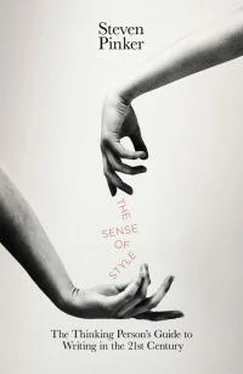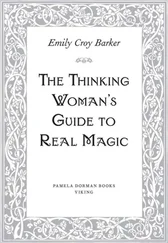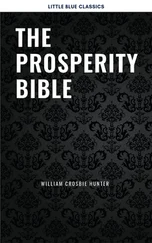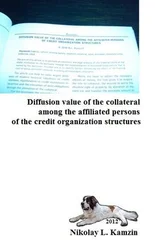Even very unique might have a place. Last night while I was walking by a cabaret in Provincetown, I was handed a glossy postcard inviting passersby to the show. The card showed a well-toned man wearing a silver lamé dinner jacket with matching bow tie, pasties, codpiece, and nothing else, surrounded by a bevy of voluptuous big-haired showgirls of both genders, and at his feet an androgynous waif with a pencil mustache in a turquoise sequined sailor suit. The copy read: “The Atomic BOMBSHELLS. A Drag-tastic BURLESQUE Extravaganza! Featuring Boyleseque superstar JETT ADORE! Hosted by Seattle’s Premiere Fancy Lady BEN DELACREME.” The hostess who handed me the card promised that it would be a “very unique show.” Who would argue?
Here is the flaw in the purists’ logic. Uniqueness is not like pregnancy and marriage; it must be defined relative to some scale of measurement. I am told that all snowflakes are unique, and so they may be under a microscope, but frankly, they all look the same to me. Conversely, each of the proverbial two peas in a pod is unique if you squint hard enough through a magnifying glass. Does this mean that nothing is unique, or does it mean that everything is unique? The answer is neither: the concept “unique” is meaningful only after you specify which qualities are of interest to you and which degree of resolution or grain size you’re applying.
Occasionally we can state the quality explicitly and the scale is discrete, as in Hawaii is unique among states in being surrounded by water, or The number 30 may be factored into the unique set of primes 2, 3, and 5. Purists would like to reserve the word unique for those circumstances, in which adverbs of comparison are indeed incongruous. But often our eye is caught by many qualities, some of them continuous, and the item we are considering may either be close to others on the scale or be miles away. Calling something quite unique or very unique implies that the item differs from the others in an unusual number of qualities, that it differs from them to an unusual degree, or both. In other words, pick any scale or cutoff you want, and the item will still be unique. This “distinctive” sense has coexisted with the “having no like or equal” sense for as long as the word unique has been in common use. The other supposedly absolute adjectives also depend on the granularity of the comparison scale, and thus may be qualified by how coarse or fine a scale is being used in that comparison.
This doesn’t mean that you should go ahead and use very unique, even if you are handing out postcards for The Atomic Bombshells. As we saw in chapter 2, very is a soggy modifier in the best of circumstances, and the combination with unique grates on enough readers that it’s wise to avoid it. (If you must qualify the word, really unique and truly unique, which convey degree of confidence rather than degree of distinctness, will meet with fewer objections.) But comparisons of supposedly absolute adjectives are not illogical, and often they are unavoidable.
singulars and plurals ( none is versus none are ) .The neat dichotomy in English grammar between singular and plural leaves many situations out in the cold. The problem is that there is a mismatch between the simplistic theory of number baked into our grammar and the true nature of number in all its mathematical and logical glory. Suppose I name a bunch of things and ask you to sort them into two piles, one pile for quantities equal to 1 and the other pile for quantities greater than 1. Here’s how our dialogue might go. Ready?
“A cup.”
Easy! 1.
“The potted plants.”
Easy! More than 1.
“A cup and a spoon.”
Still easy! 1 + 1 = 2, which is more than 1.
“A pair of gloves.”
Well, that depends … I see two objects, but they count as one item on my sales receipt, and when I decide whether I can use the express checkout lane.
“The dining room set.”
Gee, that also depends. It’s one set, but four chairs and a table.
“The gravel under the flowerpot.”
Hey, am I supposed to count every pebble, or can I consider it just a saucerful of gravel?
“Nothing.”
Hmmm … Neither, I guess. What am I supposed to do now?
“The desk or the chair.”
Huh?
“Each object in the room.”
Wait—do you want me to stand back and consider all those things at once (that would be greater than 1) or zoom in and examine them one at a time (that would be 1 each time)?
These are the brainteasers that English writers must solve when they shoehorn expressions with none, every, and other quantifiers into the singular-plural dichotomy.
Purists insist that none means “no one” and therefore must be singular: None of them was home, not None of them were home. This is false; you can look it up. None has always been either singular or plural, depending on whether the writer is pondering the entire group at once or each member individually. The singular ( None of the students was doing well ) feels a bit more specific and emphatic than the plural ( None of the students were doing well ), and is often stylistically preferable for that reason. But when an additional quantifier forces us to carve out a subset of the group and say something about that subset, the plural is irresistible: Almost none of them are honest (not is ) ; None but his closest friends believe his alibi (not believes ). Any can also swing both ways: Are any of the children coming? Any of the tools is fine. And so it is with no, depending on the number of the noun it quantifies: No man is an island; No men are islands.
In contrast to these three terms, which specify pure not-ness and lack an inherent number, some quantifiers do single out one individual at a time. Neither means “not one of the two,” and it is singular: Neither book was any good, not Neither book were any good. The same is true of either, even when it picks one item from a pair: Either of the candidates is experienced enough to run the country, not are . Likewise, the one in anyone and everyone , the body in somebody and everybody, and the thing in nothing shout that they are referring to one thing at a time (even though the words rope in the entire universe of individuals), and that makes each of them singular: Anyone is welcome to try; Everyone eats at my house; Everybody is a star; Nothing is easy.
When two singular nouns are coordinated with and , the phrase is usually plural, as if the language is acknowledging that one plus one equals two: A fool and his money are soon parted; Frankie and Johnny were lovers. But when the duo is mentally packaged as a single entity, it can be singular: One and one and one is three; Macaroni and cheese is a good dinner for kids. This is part of a larger phenomenon called notional agreement, in which the grammatical number of a noun phrase can depend on whether the writer conceives of its referent as singular or plural, rather than on whether it is grammatically marked as singular or plural. A writer can mentally package a conjoined phrase into a single unit ( Bobbing and weaving is an effective tactic ). Or he can do the opposite: peer into a singular collective noun and see the plurality of individual members composing it (as in The panel were informed of the new rules ). This is far more common in British English; Americans do a double take when they read The government are listening at last, The Guardian are giving you the chance to win books, and Microsoft are considering the offer.
Читать дальше












